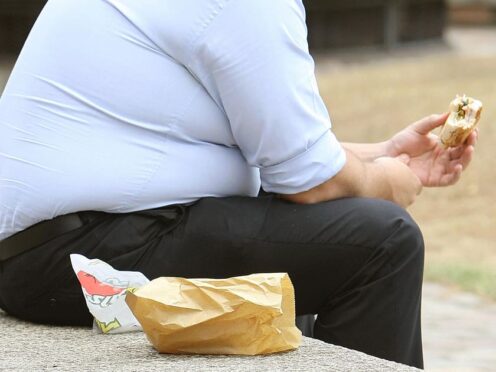Fewer middle-aged people are dying from cancer than at any point in 25 years, though cases are rising due to factors such as obesity, researchers say.
A new study from Cancer Research UK and published in the British Medical Journal (BMJ) found death rates from the disease among those aged 35 to 69 have plummeted, thanks to screening, better treatments and policies aimed at cutting smoking.
However, the UK-wide study warns that improvements in survival are slowing down, while cancer cases are rising, with a 57% jump in men and a 48% jump in women over the 25-year period.
In 1993, some 55,014 cancer cases were registered in men, but this rose to 86,297 in 2018, while in women the rise was from 60,187 to 88,970.

The researchers said the increases were mainly driven by rises in prostate and breast cancer, in part thanks to tests and screening, though there were also “concerning” rises in melanoma, liver, oral and kidney cancers.
While cancer cases are rising due to a growing population, factors such as obesity, drinking too much and being inactive play a role, they said.
Cancer Research UK said that, if action is taken against smoking, being overweight and obesity and alcohol, nearly 37,000 cancer cases could be prevented by 2040.
According to the study, four cancers (liver, melanoma, oral and kidney) showed “substantial increases in incidence” of more than 2% per year in both sexes across the 25 years.
The researchers said these are linked to known lifestyle factors, such as alcohol consumption, smoking, sun exposure and being overweight or obese.
“Increases in liver cancer incidence and mortality for both men and women are very concerning, with nearly one in two attributable to modifiable risk factors,” they said.
“With high prevalence of overweight and obesity and diabetes in the general population, other studies expect the rates to remain high.”
Being overweight or obese can cause 13 cancer types, such as stomach, bowel, liver, pancreatic, gallbladder, breast, uterus, ovary, kidney and thyroid.
Meanwhile, alcohol has been linked to seven types of cancer, including mouth, upper throat, larynx, oesophagus, breast and bowel cancer.
The study found that, overall, death rates have dropped by 37% in men and by 33% in women over the 25 years, when accounting for the growing and ageing population.
Success against individual cancers is noted.
For example, cervical cancer death rates fell by 54%, reflecting NHS cervical screening and the introduction of a vaccine against human papillomavirus (HPV), which causes most cervical cancer cases.
Lung cancer death rates also fell, by 53% in men and 21% in women, thanks to drops in the number of people smoking.
Drops were also noted for stomach, mesothelioma and bladder cancers in men, and stomach and non-Hodgkin lymphoma in women.
Cancer Research UK’s head of cancer intelligence and lead author of the study Jon Shelton said: “This study helps us to see the progress we’ve made in beating cancer and where challenges clearly remain.
“With cancer cases on the rise and improvements in survival slowing, it’s vital that the UK Government takes bold action to keep momentum up…
“We must continue to prevent as many cancer cases as possible, diagnose cancers sooner and develop kinder treatments.”
Cancer Research UK’s chief executive Michelle Mitchell said: “This major study brings to life improvements that have been made to tackle cancer in recent decades.
“If we take lung cancer, for example, we can clearly see that reducing smoking prevalence saves lives.
“The UK Government can build on this success by raising the age of sale of tobacco and continuing to fund a world-leading programme of measures to help people who smoke quit.
“But cancer is still a defining health issue in the UK that impacts nearly one in two people.
“People face long waits for vital tests and treatment and cancer cases are on the rise.
“Cancer patients won’t feel the full benefits of advances in research breakthroughs and innovation, including new cancer treatments, without a long-term plan and funding from the UK Government.”
Health Secretary Victoria Atkins said: “I welcome the positive findings of this report. Through innovations in technology and treatment, cancer screening programmes and measures to help people quit smoking, survival rates are improving across almost all types of cancer.
“We will shortly introduce a new law to stop children who turn 15 this year or younger from ever legally being sold cigarettes or other tobacco products. This is the biggest single public health intervention in decades, protecting an entire generation and future generations from the harms of smoking.
“But I know challenges remain. That’s why I want to make our healthcare system faster, simpler and fairer, and achieve our goal of catching 75% of all cancers at stage 1 or 2 by 2028.
“Last year, NHS England carried out a record number of cancer tests, and we are investing £2.3 billion in our new network of local community diagnostic centres, while our forthcoming Major Conditions Strategy will further improve cancer prevention, diagnosis and treatment.”
For the study, researchers used UK-wide data to examine trends in men and women aged 35 to 69 who were newly diagnosed with, or died from, cancer between 1993 and 2018.
